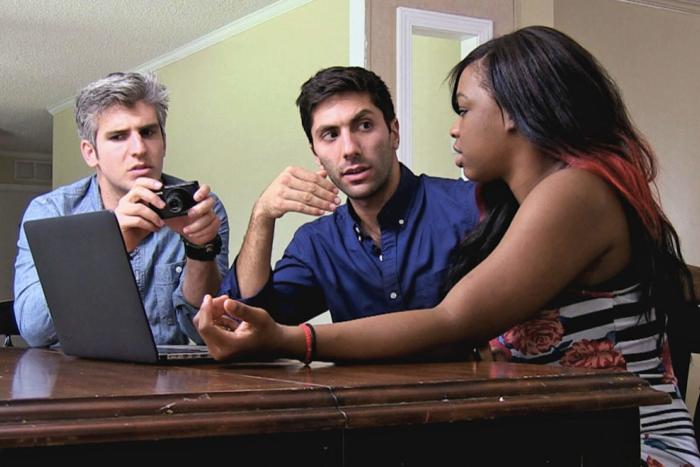Here’s a puzzle: take a book of matches, a candle, and a box of thumbtacks. Now, figure out how to attach the candle to the wall so that it doesn’t drip all over the floor. Do you melt the side a little and attempt to stick it in place? Do you try to pin it to the wall? Maybe create a makeshift holder out of matchsticks and some wax?
The Duncker Candle Problem, as it’s called, is a cognitive behaviour test that’s been around since 1945. It’s used to measure your capacity for creative thinking, and, according to a 2013 study, your ability to solve it may be related to how racist you are.
An inability to MacGyver a candle holder out of a few odds and ends is not obviously related to casual racism, but Carmit Tadmore of Tel Aviv University and her colleagues believe they share a common mechanism: a reliance on rigid, categorical thinking. In a study published in the journal Psychological Science, the researchers conducted a series of experiments to test whether views about race changed affected people’s mental flexibility. Does a belief in racial essentialism make you less creative?
Racial essentialism is the belief that different racial groups are defined by a fixed, underlying set of fundamental genetic attributes (at the other end of the spectrum is the belief that racial categories are just arbitrary social constructions). Essentialists might argue that East Asians are biologicallyhardworking and uncreative, or that there are deep, evolutionary reasons for poverty in Nigeria. Unsurprisingly, a belief in essentialism has long been shown to be linked with less subtle forms of bigotry; in this study, researchers found a strong correlation between white test subjects who were racial essentialists and people who believed that “African Americans were uneducated, violent, and irresponsible.”
In an initial experiment, the researchers took 57 white Americans and assessed their views on race by asking them whether they agreed with this statement: “To a large extent, a person’s race biologically determines his or her abilities and traits.” The participants were then asked to come up with as many different uses for a brick as possible—a measure of mental flexibility. They found that a belief in essentialism predicted a lack of creativity, an inability to “break preexisting assumptions about an object and approach it from novel perspectives.”
In follow-up studies, the researchers went further, exploring not just whether there was a connection between essentialism and creativity, but whether essentialist attitudes might actually cause people to become unimaginative. In one experiment, 72 Jewish-Israeli undergraduates were split into three groups. Researchers then tried to manipulate racial beliefs by having the first two groups read fictitious scientific research that either vividly “proved” or “disproved” essentialism (the third control group read an unrelated article). The manipulation was successful: after reading the essentialist scientific article, test subjects became far more likely to agree with the article’s views. Next, test subjects was asked to complete a seemingly unrelated project, taking three distinct words and finding the word that connected them (for example, if given “manners,” “round,” and “tennis,” the connecting word is “table”). Researchers found that there was a significant difference between the groups. People primed for essentialism solved an average of just 3.22 problems, while the non-essentialist group averaged 4.25 answers.
In another pair of experiments, this time with both a Caucasian group and a group of Asian Americans, subjects were again divided, primed using the faux-scientific literature, and then asked to solve the Duncker Candle Problem. Once again, the essentialists displayed far less creativity, failing to put together a decent candleholder. Once pushed into a certain way of thinking, people seemed to demonstrate a closed-mindedness that transcended ideas about race and bled into the rest of their thinking. Crude stereotyping and categorization became the tool they used to approach the rest of the world.
While the idea that reconsidering your views on racial essentialism might somehow unleash your inner creativity seems silly—the topic of a terrible self-help book aimed at unsuccessful basketball team owners and newspaper columnists with writer’s block—the study makes a certain intuitive sense. Creativity is fundamentally the ability to recombine old ideas, moving beyond preexisting categories in order to create things that are genuinely novel. And while racial essentialism has its advantages—allowing us to make quick, efficient judgments, providing patterns that help us make sense of an infinitely messy world—when it comes to problem-solving, the “rigid conceptual network of the essentialist mind-set” works against you.
And the solution to the Duncker Candle Problem? Take the tacks out of the box, use that as your holder, and pin it to the wall. It’s a simple answer that requires seeing the box in a new way. Why stereotype it as a mere receptacle for tacks when it can be so much more? Racial essentialism, at its base, means thinking inside the box.
Studies Show runs every Thursday.






